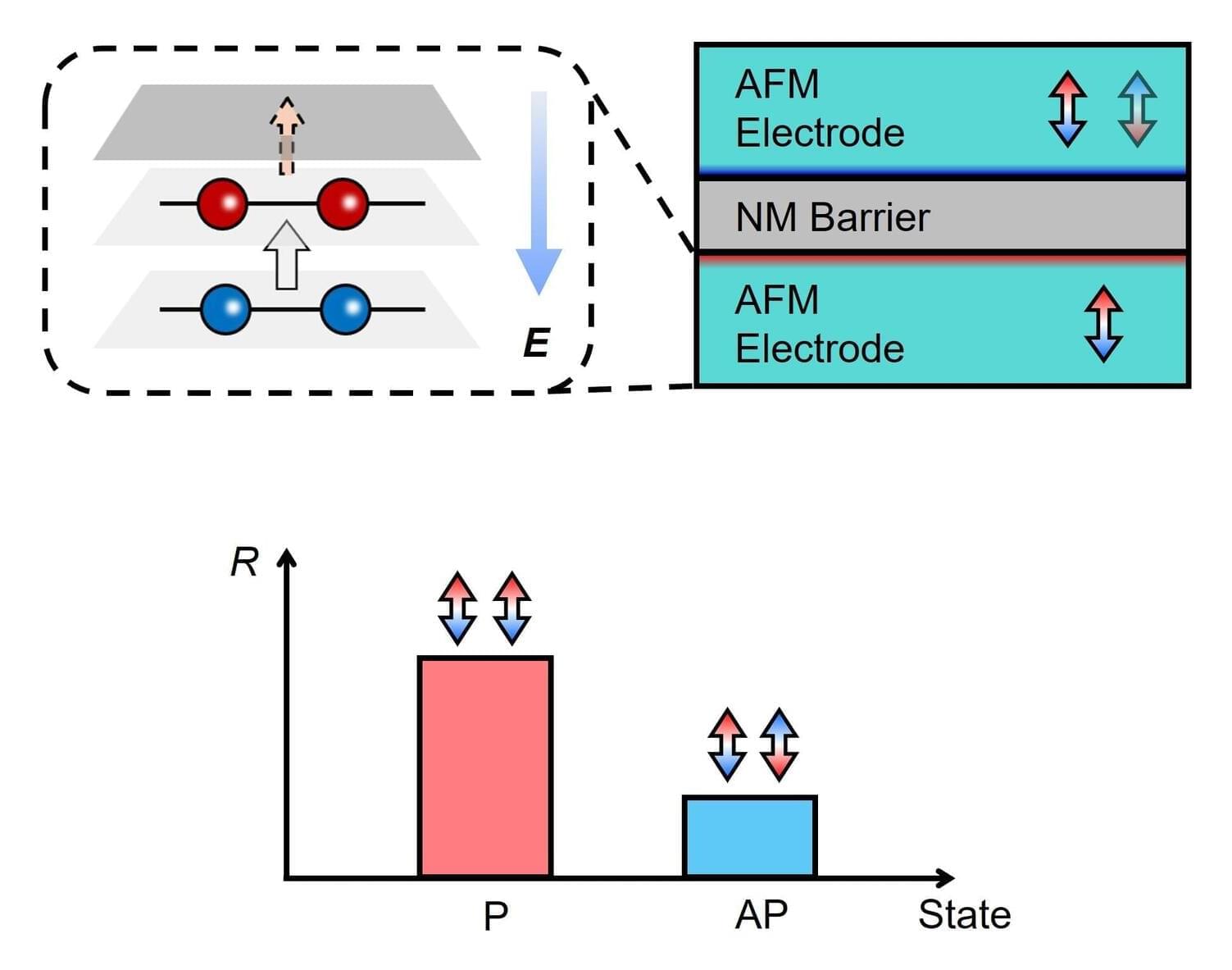A research team led by Prof. Shao Dingfu at the Institute of Solid State Physics, the Hefei Institutes of Physical Science of the Chinese Academy of Sciences, has unveiled a new mechanism for achieving strong spin polarization using antiferromagnetic metal interfaces.
Their findings, published in Newton recently, propose a third prototype of antiferromagnetic tunnel junction (AFMTJ), paving the way for faster and denser spintronic devices.
As electronics demand smaller size, higher speed, and lower energy use, spintronics—using both electron charge and spin—offers a strong alternative to traditional devices. Magnetic tunnel junctions (MTJs), a key spintronics technology, are already used in data storage but face limits due to slow response speeds and unwanted magnetic fields from their ferromagnetic parts.
